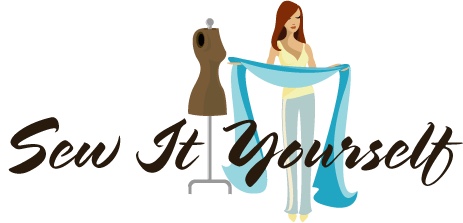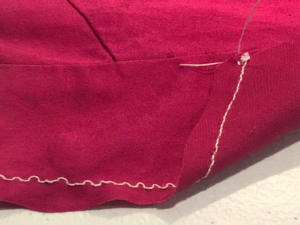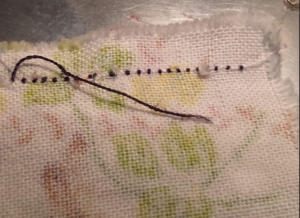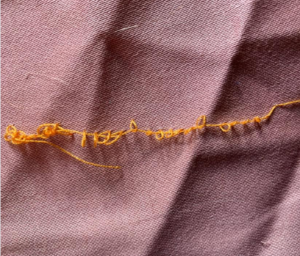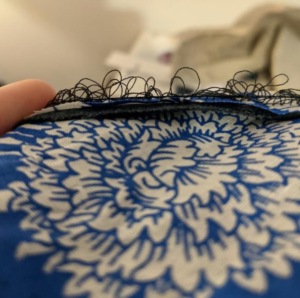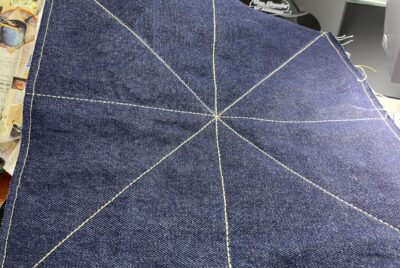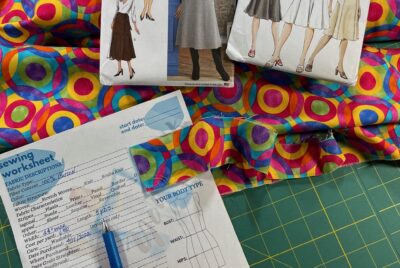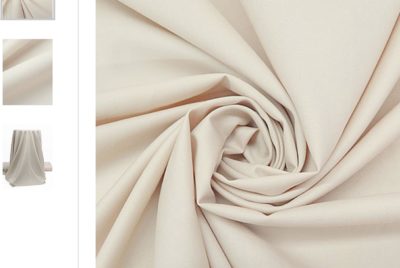7 Simple Ways to Practice Sewing Straight Line Stitches Straight line stitching How many times have…
Choosing Sewing Machine Needles
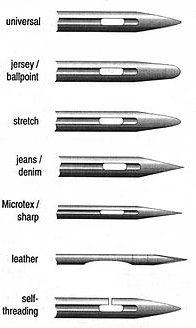
Choosing sewing machine needles is very important and often underestimated for the work being done. Most people think they can use the same needle for every sewing project and will not change the needle unless it breaks. Even if the needle breaks, they use the same type of sewing machine needle no matter which fabric they are using.
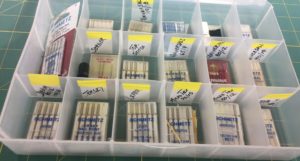
No matter what type of machine you have, they all require a sewing machine needle that’s vital to the stitch formation process. All needles need to deliver the thread on the top spool spindle down through the eye to connect with the bobbin thread and form a perfect stitch. Choosing the correct needle all depends of the type of sewing fabric and thread you are using to get professional-looking results. If the wrong needle is used, you may encounter all types of problems including loose or skipped stitches, thread bundles and birds’ nests.
Which sewing machine needle for which fabric?
There are just too many needle types and sizes to keep up with that you wouldn’t have enough room to store them. But, there are a few types that you should keep on hand based on the type of fabrics you sew on regularly. If there’s an opportunity to sew on any specialty fabrics such as leather, fur, vinyl, etc., then use a corresponding sewing machine needle.
There are two types of fabrics most commonly used are woven and knits:
- Woven fabrics include fibers made of cotton, linen, ramie, silk and wools. They are made of two sets of yarns, a lengthwise(warp) and a crosswise (weft) fibers interlacing at right angles.
- Non-woven or knits are made by using needles to arrange a continuous yarn into interlocking loops. These are commonly known as your stretchy fabrics such as fleece, jersey, lycra, sweatshirt and scuba or neoprene, etc.
More information about basic sewing fabrics are included to help you determine the type of needle to use with your project.
With a woven fabric, the needle needs to find its way through the spaces between the lengthwise and crosswise fibers. But knitted fabrics can be damaged if the needle comes down on any of the single fibers and tearing through the knitted layers. Each of these two types of fabrics will require two different types of needles to form a perfect stitch.
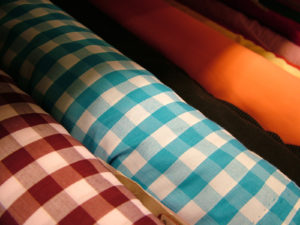
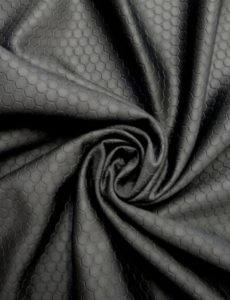
Choosing sewing machine needle types
Sewing machine needles are available with different types of points:
- Sharp points, also known as Microtex, Jeans or Denim
- Ball Points, also known as Jersey
- Wedge points, also known as Leather
- Universal points
The point of a needle impacts the shape and size of the needle eye. And, the needle shape and size determines how the point will enter your fabric. If the wrong needle point enters a fabric that it was not designed for, the needle may cause skipped stitches or damage to your fabric. For this reason, you will first want to choose a needle type to match the fabric you’re working with.
Keep in mind that sharp points are designed to pierce through the spaces between the lengthwise and crosswise fibers of woven fabrics. Ball points have a rounded point in order to push fibers aside and slip between fibers, wedge points for cutting leather and vinyl, and universal points for general purpose use on both woven and knitted fabrics. Although universal point needles are designed for both woven and knitted fabrics, they are not always as effective as the ones designed for a specific fabric. Most experienced sewists maintain a supply of assorted universal points as a back-up.
Sewing machine needle sizes
Choosing sewing machine needle sizes are based on the fabric thickness, the number of fabric layers and your thread. Needles range in sizes from 8 for fine fabrics to size 20 for dense fabrics. The lower the number, the finer the needle. Fine fabrics should be sewn with fine needles and heavier or thicker fabrics with heavier needles. Basically, if you are working with lightweight, woven fabrics such as chiffon, crepe de chine, silk or organza, use a small size needle with a sharp point (Mictotex). If you’re working with a medium weight woven, such as broadcloth, linen or denim, increase the needle size to an 11 or 14. And, if a heavy weight woven fabric, like corduroy, wool suitings, heavier denim for jeans, use sizes 16, 18 or 20 (Jeans/Denim).
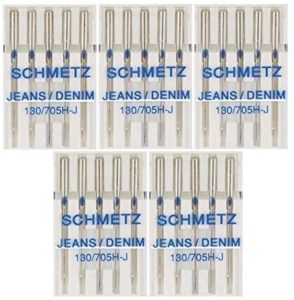
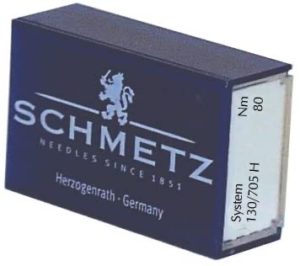
As you can see, most woven fabrics require sewing machine needles that can slip between the the lengthwise and crosswise fibers. Those include the sharp points: microtex, jeans/denim and sometimes universal needles work best.
Use the same concept for knit fabrics depending on weight, increase your needle size to match the fabric weight. But in this case, use a ball point needle to prevent damaging those intertwined fibers. The needle types that work best with knits are the stretch or jersey needles.
If you’re having trouble with choosing sewing machine needles, refer to the chart from Bernina below:
Another great resource to help you choose the right needle is from Superior Threads.
